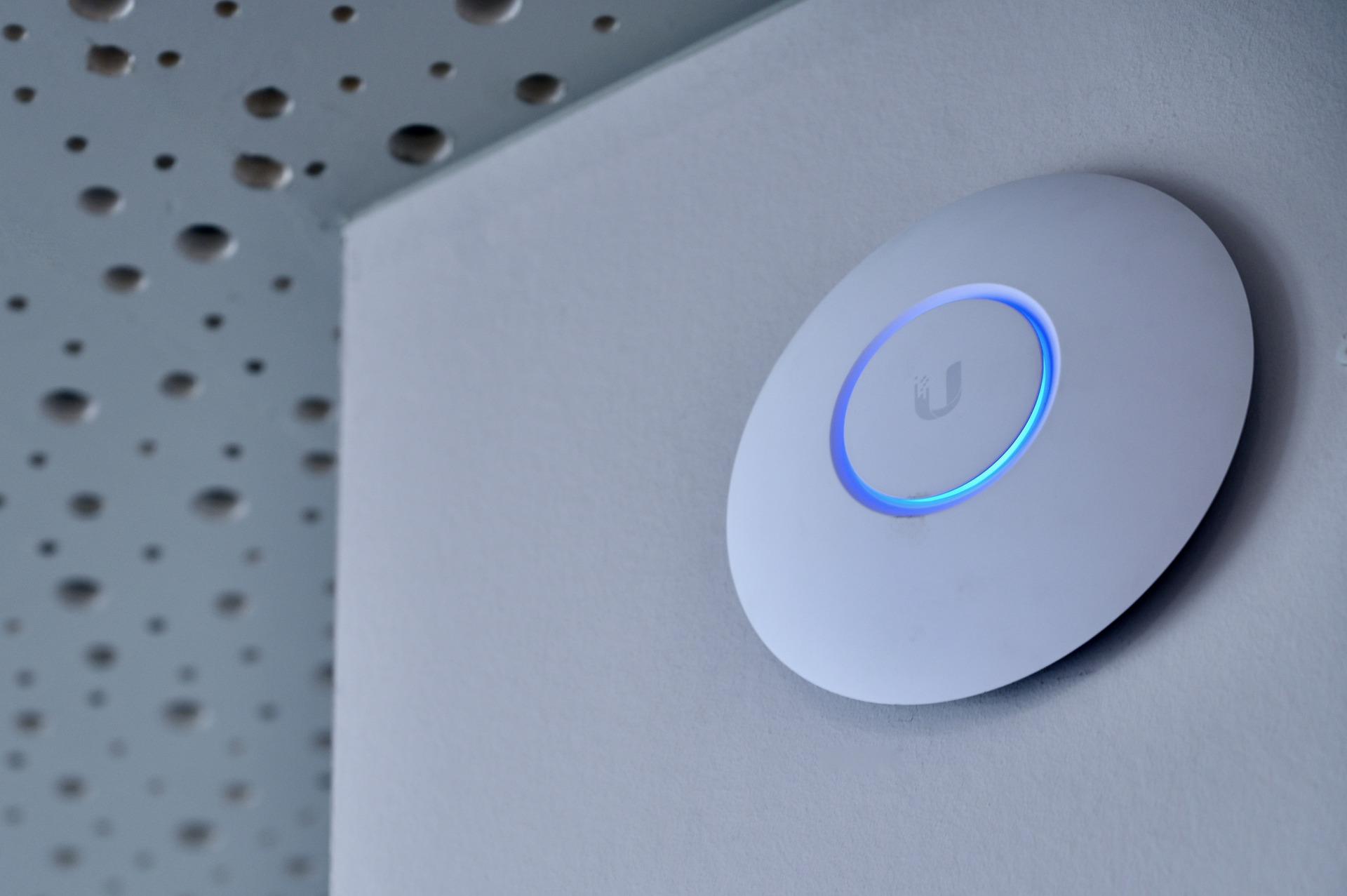
Mesh Wi-Fi is quickly becoming the next-generation alternative for home networking. The term internet means mesh. Traditionally internet service providers relied on wired connections for providing internet services. With the evolution of technology, mesh Wi-Fi systems came into existence that did not rely on wires
What Do You Need to Know About Mesh Networks?
A mesh Wi-Fi system adheres to two or more access points of Wi-Fi, creating one single shareable seamless Wi-Fi network that can meet and cover the internet needs of the largest buildings and homes. A Mesh Wi-Fi system is perfect if you want wireless connectivity in your space. For large physical spaces of 3000 sq. feet or more, wires internet Wi-Fi becomes a hassle because the user is likely to face the issue of multiple Wi-Fi dead zones. That is where the usability of a wire-free mesh Wi-Fi becomes prominent.
The best part about Mesh Wi-Fi is that it is super simple to set up and the seamless coverage. Once the internet services switch from traditional routers to mesh Wi-Fi, ideal internet access can be enjoyed almost everywhere – in rooms, offices, and garages.
Benefits of Using Mesh Wi-Fi
Whether using a fully connected mesh network or a partially connected network, both mesh topologies offer the following advantages over traditional Wi-Fi systems:
Hassle-Free Network Management
The primary distinguishing feature between mesh and traditional Wi-Fi is the ease of network access. Mesh Wi-Fi system is entirely automated and you can manage the system with the help of a mobile app. For traditional Wi-Fi, the users have to plug into the computer and conduct several configurations before accessing the Wi-Fi. Features such as quick speed scans, creating guest networks, and cutting off access to unwanted regions are helpful mesh Wi-Fi network management features.
Extensive Security
As discussed earlier, users can restrict and streamline network usage through easy management. It is straightforward to restrict unwanted network usage in the case of mesh Wi-Fi. Firmware installation is more convenient with the help of Mesh Wi-Fi. The regulatory mobile app will also screen for any unwanted or suspicious devices that might want to connect to your network. Mesh Wi-Fi comes with enhanced security and the best part is – the connections and their management are always at the user’s fingertips.
Uninterrupted Networking
Users can now bid farewell to constant network reconnections. Even if the connected devices are constantly moved from one room to another, there is hardly any lag in the network connectivity. Almost all the access points broadcast signals with similar strength. One of the major drawbacks of the traditional Wi-Fi system is the need to route through multiple networks to get the strongest one. Automated and seamless mesh Wi-Fi mitigates the need for routing and paves the way for enjoying uninterrupted internet services. Mesh Wi-Fi is highly resilient to network problems and continues working even in the direst situations
Farewell to Slow Speed and Dead Zones
Struggle with internet speed and dead zones are real. Connections being interrupted amidst a vital meeting or experiencing internet dead zones in some areas of the house is such a common phenomenon with traditional Wi-Fi. Users can say goodbye to these problems with the mesh router system. It is time for a switch for users who are too tired with multiple interruptions in their usage.
Scalable
Users do not need additional routers to change the network size. Mesh Wi-Fi is easily scalable and it is just a matter of seconds before you can change the network size. Multiple devices can be added to the network with just a click. It is also easy to control the entire network seamlessly.
Final Thoughts
Now here comes the major dilemma – do users really need to switch to a mesh Wi-Fi system? Well, if the area to be covered by the Wi-Fi si greater than 3000 sq feet and exists in multiple storeys, switching over to a mesh Wi-Fi system is definitely a better choice. Also, suppose the users at some point are interested in installing smart home features in their houses. In that case, mesh Wi-Fi will definitely be better compatible because remote management through mobile apps is much easier with mesh Wi-Fi.
RELATED ARTICLES
Latest Articles
 Unlocking Success: Mastering Bank PO Interview PreparationIn EducationApril 24, 2024For banking careers, PO interviews stand as formidable […]
Unlocking Success: Mastering Bank PO Interview PreparationIn EducationApril 24, 2024For banking careers, PO interviews stand as formidable […] The Strategic Value of Purchasing FontsIn TipsApril 18, 2024In today’s visually driven world, fonts are more […]
The Strategic Value of Purchasing FontsIn TipsApril 18, 2024In today’s visually driven world, fonts are more […] Revolutionizing Business: How AI Transforms Customer Experience in the Inflatable IndustryIn BusinessApril 16, 2024Inflatable water slides are the epitome of summer fun, […]
Revolutionizing Business: How AI Transforms Customer Experience in the Inflatable IndustryIn BusinessApril 16, 2024Inflatable water slides are the epitome of summer fun, […] Most Asked Microservice Interview Questions For 2024In TechnologyApril 2, 2024To keep up with changing trends in the tech industry […]
Most Asked Microservice Interview Questions For 2024In TechnologyApril 2, 2024To keep up with changing trends in the tech industry […] Best JavaScript and CSS Library In 2024In TechnologyApril 2, 2024With the ever-expanding functionality of web […]
Best JavaScript and CSS Library In 2024In TechnologyApril 2, 2024With the ever-expanding functionality of web […] Front-End Development Trends to Follow in 2024In TechnologyApril 2, 2024For better engagement, the front-end development of […]
Front-End Development Trends to Follow in 2024In TechnologyApril 2, 2024For better engagement, the front-end development of […] Simplifying Mealtime: Meal Prepping for a Family of FourIn UncategorizedMarch 22, 2024In the hustle and bustle of daily life, planning and […]
Simplifying Mealtime: Meal Prepping for a Family of FourIn UncategorizedMarch 22, 2024In the hustle and bustle of daily life, planning and […] How to Freeze Dry Candy With And Without a Machine?In FoodFebruary 27, 2024A candy lover constantly searches for novel and […]
How to Freeze Dry Candy With And Without a Machine?In FoodFebruary 27, 2024A candy lover constantly searches for novel and […] How to Get Something Out Of Your Eye Immediately?In healthFebruary 27, 2024Getting something inside your eyes can be frustrating […]
How to Get Something Out Of Your Eye Immediately?In healthFebruary 27, 2024Getting something inside your eyes can be frustrating […] The Evolution of Remote Control Technology: From RC Cars to DronesIn TechnologyFebruary 22, 2024Remote control technology has come a long way since […]
The Evolution of Remote Control Technology: From RC Cars to DronesIn TechnologyFebruary 22, 2024Remote control technology has come a long way since […] Unveiling the most popular carnival costumes: A colorful parade of creativityIn FashionFebruary 19, 2024In the world of festivities and merrymaking, few […]
Unveiling the most popular carnival costumes: A colorful parade of creativityIn FashionFebruary 19, 2024In the world of festivities and merrymaking, few […] Custom GPTs: The Next AI Opportunity for BusinessesIn Business, TechnologyFebruary 14, 2024The rise of artificial intelligence has transformed […]
Custom GPTs: The Next AI Opportunity for BusinessesIn Business, TechnologyFebruary 14, 2024The rise of artificial intelligence has transformed […]
stopie.com is a participant in the Amazon Services LLC Associates Program, an affiliate advertising program designed to provide a means for sites to earn advertising fees by advertising and linking to Amazon.com.
Clicking on an Amazon link from stopie.com does not increase the cost of any item you purchase.
We will only ever link to Amazon products that we think our visitors may be interested in and appreciate learning more about.



